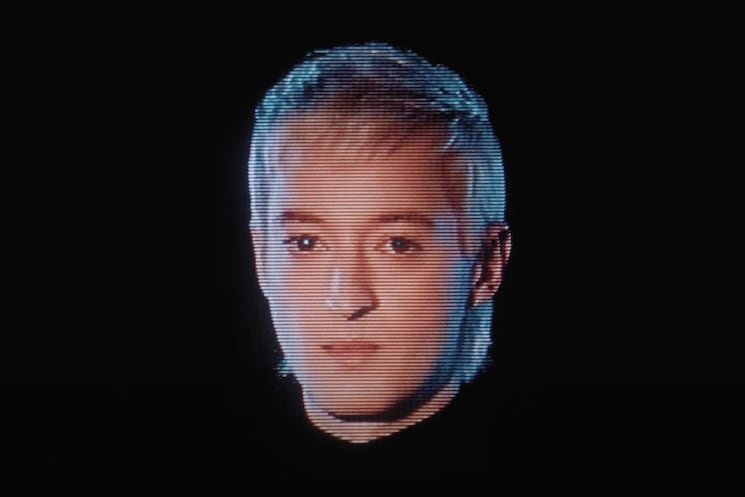You'd be forgiven for thinking yourself a trespasser in the world of Art d'Ecco. After all, his is a creative ecosystem that feels so real, so familiar, and yet not quite of our own: a bit more clouded, a little more sinister, a lot more glam. Yet however foreign it may feel at first, Trespasser emerges as a weirdly inviting and widely inclusive debut, mapping out a singular terrain of rock: stuffed with camp, horror and wide-eyed wonder.
The process of creating Trespasser was one of reclusion. d'Ecco retreated to live with his aging grandmother in a cottage in the Gulf Islands, using music as a gesture of comfort and care as his relative's memory began to fade. It was in this landscape that Trespasser was conceived, with d'Ecco holed-up in solitude, albeit accompanied by some favourite records: David Bowie's Low and Deerhunter's Cryptograms, to name a few.
The sonic residue of these influences is palpable, but Trespasser never feels derivative. Perhaps this is due to the sheer breadth of musical memory that materializes from the mist of the record: there's the retro horror-film soundtrack of the titular song, the '90s grunge guitar progressions of "Last In Line," the Congratulations-era MGMT energy that pervades "Lady Next Door."
Yet Trespasser subverts generic tropes just as often as it pays them due. Confessing he finds the current aesthetic of rock'n'roll to be "a little tired," d'Ecco instead leans into an androgynous, theatrical persona that challenges "the masculine overtones" of the genre. His highly stylized persona is a perfect encapsulation of the spirit of these songs: alluring and visually beautiful, yet tinged with an unmistakable darkness.
Consider the stream of images that emerge in "Last In Line," where d'Ecco's shapeshifting voice conjures scenes of moonlit wilds, unknown crimes, and chain gang lovers, convening in an unsettling mix of desire and darkness from which it is impossible to turn away.
In the end, Trespasser welcomes all, giving a glam-rock stare-down of the absurd and finding light in the darkness. No one is a trespasser with Art d'Ecco; it's just up to you to join him.
(Paper Bag)The process of creating Trespasser was one of reclusion. d'Ecco retreated to live with his aging grandmother in a cottage in the Gulf Islands, using music as a gesture of comfort and care as his relative's memory began to fade. It was in this landscape that Trespasser was conceived, with d'Ecco holed-up in solitude, albeit accompanied by some favourite records: David Bowie's Low and Deerhunter's Cryptograms, to name a few.
The sonic residue of these influences is palpable, but Trespasser never feels derivative. Perhaps this is due to the sheer breadth of musical memory that materializes from the mist of the record: there's the retro horror-film soundtrack of the titular song, the '90s grunge guitar progressions of "Last In Line," the Congratulations-era MGMT energy that pervades "Lady Next Door."
Yet Trespasser subverts generic tropes just as often as it pays them due. Confessing he finds the current aesthetic of rock'n'roll to be "a little tired," d'Ecco instead leans into an androgynous, theatrical persona that challenges "the masculine overtones" of the genre. His highly stylized persona is a perfect encapsulation of the spirit of these songs: alluring and visually beautiful, yet tinged with an unmistakable darkness.
Consider the stream of images that emerge in "Last In Line," where d'Ecco's shapeshifting voice conjures scenes of moonlit wilds, unknown crimes, and chain gang lovers, convening in an unsettling mix of desire and darkness from which it is impossible to turn away.
In the end, Trespasser welcomes all, giving a glam-rock stare-down of the absurd and finding light in the darkness. No one is a trespasser with Art d'Ecco; it's just up to you to join him.
